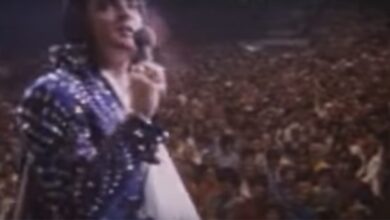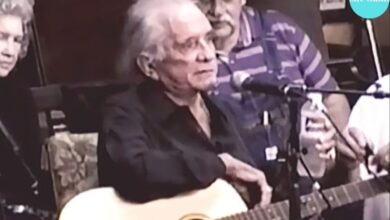This Dance Was Iconic in the 1950s, Do You Remember It Now?
The Stroll’s influence extended beyond just high school dances and sock hops; it played a significant role in shaping American youth culture of the late 1950s. The dance was more than just a fad; it symbolized the burgeoning era of rock ‘n’ roll and the shift in societal norms. The widespread exposure on television shows like Dick Clark’s “American Bandstand” allowed it to penetrate the mainstream, making it a shared experience among teenagers across the country. The show provided a platform for showcasing the latest dances, and The Stroll quickly became a favorite, embodying the fun and rebellious spirit of the era.
The Stroll was unique in its inclusivity and simplicity. Unlike more complex dance routines, it required minimal steps, making it accessible to everyone regardless of their dancing prowess. This ease of learning allowed it to spread rapidly through word of mouth and local dance events. The format of the dance—two lines of participants facing each other, with couples dancing down the middle—allowed for a communal experience while still providing space for individual expression. This combination of collective and personal elements made The Stroll a perfect fit for the social dynamics of the time.
The song “The Stroll” by The Diamonds played a pivotal role in cementing the dance’s popularity. The Diamonds, known for their doo-wop style, provided a catchy and memorable soundtrack that complemented the dance’s vibrant energy. Their harmonies and upbeat rhythm helped to amplify the dance craze, making the song an integral part of the dance experience. Dave Somerville’s lead vocals, with their smooth, engaging quality, became synonymous with the excitement of The Stroll, further enhancing the song’s impact on the dance floor.
The Stroll’s appeal was not limited to its entertainment value. It served as a cultural touchstone during a period of significant social change. The 1950s were marked by a growing sense of individualism and youth rebellion, and The Stroll encapsulated these sentiments perfectly. Its rise to prominence coincided with the broader rock ‘n’ roll movement, which was challenging traditional norms and fostering a new sense of freedom among young people.
The dance’s ability to bridge social divides was particularly noteworthy. During a time when racial segregation was still prevalent in many areas of the United States, The Stroll managed to unite diverse groups through its universal appeal. Its popularity among both black and white teenagers demonstrated how music and dance could transcend social barriers and bring people together in shared experiences.
The Stroll’s influence persisted beyond the 1950s, as it became a nostalgic reference point for subsequent generations. The dance, along with the music that accompanied it, remained a symbol of the carefree and optimistic spirit of the era. It was often referenced in media and pop culture as a representation of a simpler, more joyous time. The Stroll’s enduring legacy can be seen in how it continues to be celebrated in retrospectives of 1950s culture and its occasional revivals in modern entertainment.
In summary, The Stroll was more than just a dance; it was a cultural phenomenon that captured the essence of the 1950s rock ‘n’ roll era. Its widespread popularity, combined with the catchy tune by The Diamonds and its ability to cross social divides, made it a defining element of American youth culture. The Stroll’s impact on music, dance, and social interactions of the time highlights its significance as a cherished part of 1950s Americana.





